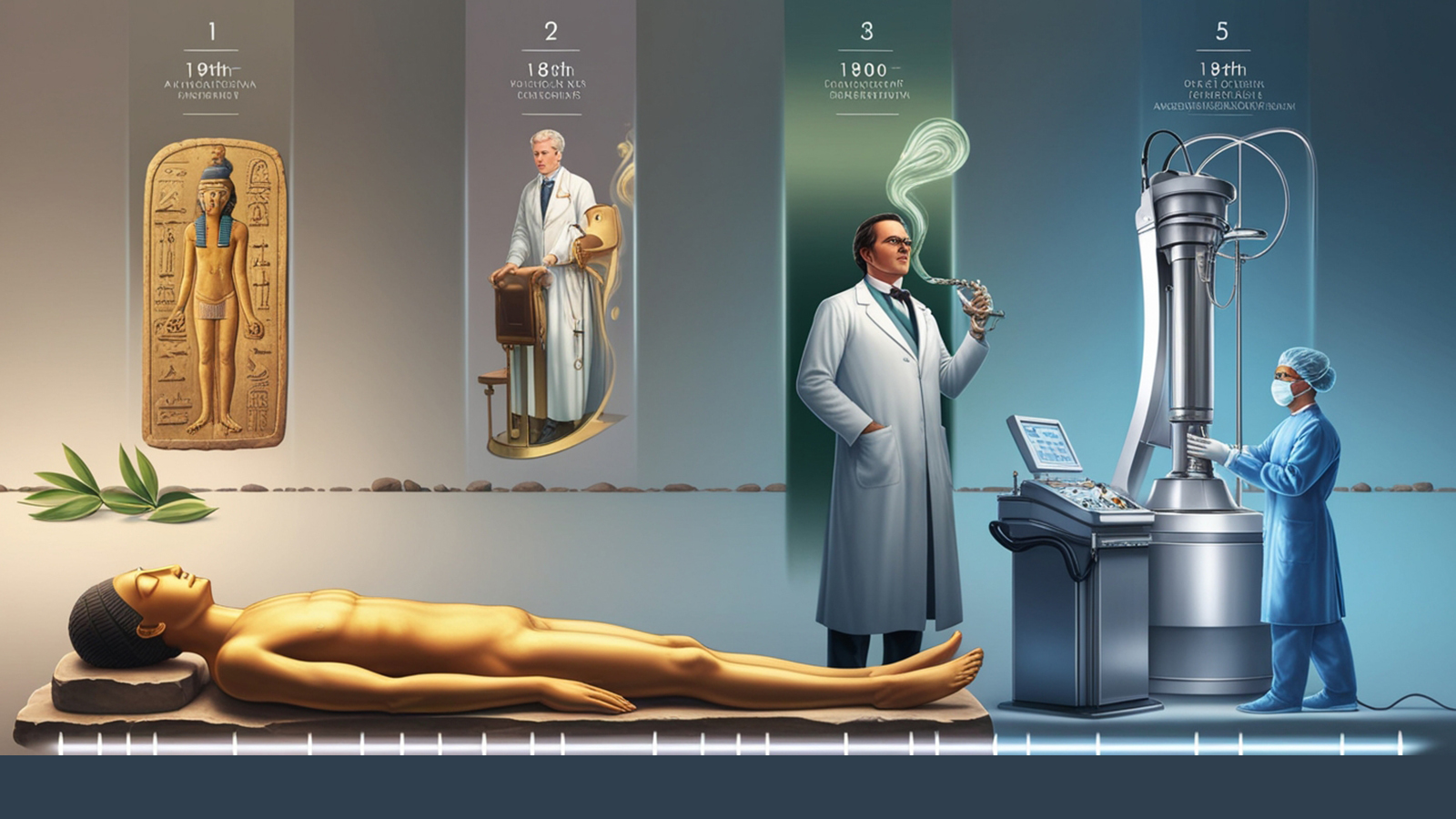
Anesthesia drugs are an integral part of medicine because although many patients fear them, modern medical treatment employs not only relatively complicated but also routine surgical interventions. Originally, and quite crude by today's standards, the evolution from antiquated practices to finesse approaches is a testament to technological advances as well as an insight into human physiology.
Ancient Beginnings:
The ancient history of anesthesia in antiquity, evidence shows that as far back as 4000BC civilizations were using opium, derived from the poppy plant, to anesthetize or dull pain. The Ebers Papyrus from around 1550 B.C. contains ancient Egyptian writings describing the blocking of the carotid artery to produce unconsciousness during surgery. The Sumerian civilization documents the use of mandragora (from the nightshade family) by 1000 B.C., as a sedative.
In addition, alcohol historically served as a common anesthetic. Sponges soaked in opium and mandrake were used as anesthesia of the time period, back during the medieval and Renaissance periods in Europe. These sponges were allowed to dry, stored under sterile conditions, and subsequently rehydrated for use in the patient's nose before surgery.
A Timeline of Anesthetic Advances:
The greatest importance of the discovery of nitrous oxide by Humphry Davy in 1799 was that it marked a turning point in the history of anesthesia because he discovered anesthesia was feasible in daily life. Dentist Horace Wells then popularized it in 1844 as a working anesthetic. It became the start of the subject known as modern anesthesia. The year 1846 marked the discovery of ether, by dentist William Morton who used it for anesthesia in surgical practice in 1846, and that followed soon with James Young Simpson introducing chloroform, in 1847.
In the 20th century, continuous refinements of anesthetic drugs and techniques occurred. The emergence of intravenous anesthesia, notably the advent of barbiturates in the 1930s, and more recently halogenated ethers such as halothane in the 1950s have since represented major advances. In the latter part of the last century, emphasis was placed on minimizing complications related to anesthesia by way of improvement in safety standards and monitoring techniques.
|
Year |
Material/Technique |
Description |
|
1799 |
Nitrous Oxide |
Discovered by Humphry Davy, used initially for recreational and then medical purposes. |
|
1842 |
Ether |
First used by Crawford Long during a minor surgery, but not publicized until later. |
|
1847 |
Chloroform |
Introduced by James Young Simpson; gained rapid popularity for surgical use. |
|
1905 |
Spinal Anesthesia |
Developed by August Bier, marking a significant advancement in regional anesthesia. |
|
1932 |
Intravenous Barbiturates |
Introduction of thiopental, used for induction of anesthesia, enhancing control over anesthesia depth. |
|
1956 |
Halothane |
A nonflammable, potent inhalational anesthetic that became widely used globally. |
|
1970s |
Propofol |
Introduced in the 1970s and became one of the most commonly used intravenous anesthetics for induction and maintenance. |
|
1980s |
Sevoflurane and Desflurane |
Newer, more advanced inhalational anesthetics that offered quicker recovery times. |
|
1990s |
Laryngeal Mask Airway (LMA) |
Introduced as an alternative to intubation, simplifying anesthesia administration for many surgeries. |
|
2000s |
Ultrasound for Nerve Blocks |
The use of ultrasound revolutionized the precision of regional anesthesia. |
|
2010s |
Dexmedetomidine |
Approved for use as a sedative-analgesic, known for its minimal respiratory depression. |
Regulatory Landscape:
Regulation of anesthetic agents includes robust review and approval mechanisms, most notably regulated by the U.S. Food and Drug Administration (FDA) as well as the European Medicines Agency (EMA). It also tests these drugs for safety and effectiveness before they can be approved to be used. Furthermore, the development of guidelines by the ASA and related organizations in other countries has established standards for anesthetic practice to promote patient safety and high-quality care.
Modern Anesthetic Agents:
Anesthesia methods are generally divided into three categories: inhalational, intravenous, and local. Abstract Inhalational anesthetics, including isoflurane and sevoflurane, are general anesthetic agents used for the maintenance of anesthesia during surgical procedures. IV agents such as propofol provide a rapid onset and offset that is suitable for shorter procedures. These are typically given as intraoperative injections, that is direct injection around nerve trunks viewable following identification and similar to local anesthetics like lidocaine or bupivacaine but stronger.
The sedation procedure is supported by the administration of adjuvant medications such as dexmedetomidine and different opioids to potentiate anesthetic drugs, pain control, and adjuncts.
|
Type of Anesthesia |
Generic Name |
Brand Name |
|
Inhalational |
Isoflurane |
Forane |
|
Sevoflurane |
Ultane |
|
|
Intravenous |
Propofol |
Diprivan |
|
Ketamine |
Ketalar |
|
|
Local |
Lidocaine |
Xylocaine |
|
Bupivacaine |
Marcaine |
Looking Ahead: The Future of Anesthesia
Technology and personalized medicine will define the future of anesthesia. These include advances in such areas as computer-assisted personalized sedation systems and research into genetic markers that can help predict how an individual will respond to certain anesthetic drugs. Not only do these systems enhance the patient experience by optimizing surgical outcomes, but workflow improvements associated also ensure more convenient diagnosis and treatment of patients.
This historical evolution illustrates the history of anesthesia and how man has strived to reduce pain and improve the outcome of surgical procedures. Looking ahead, the refinement of anesthesia techniques and implementation of new technology in medicine promises to continue to revolutionize this critical medical practice.
.